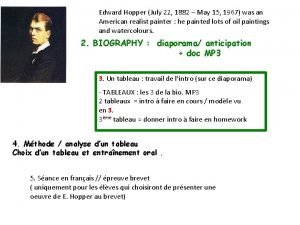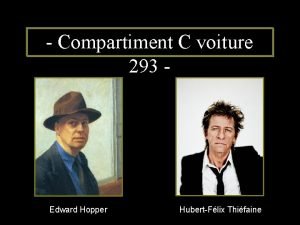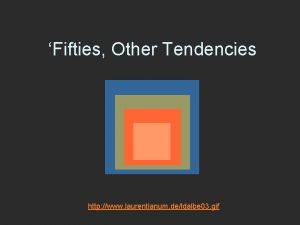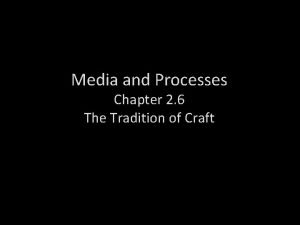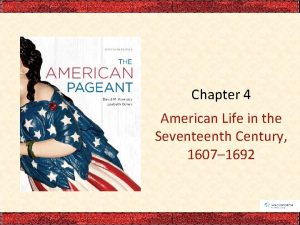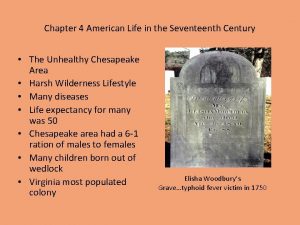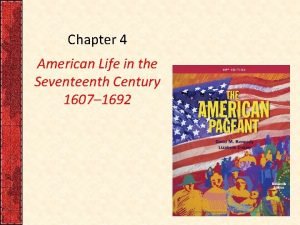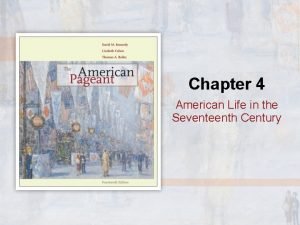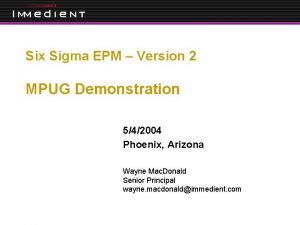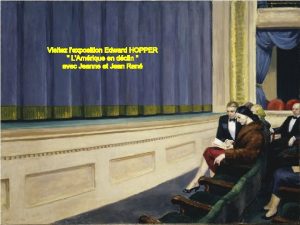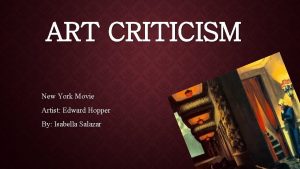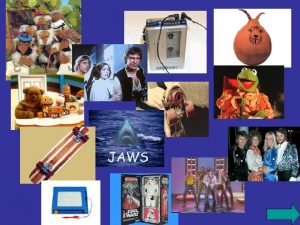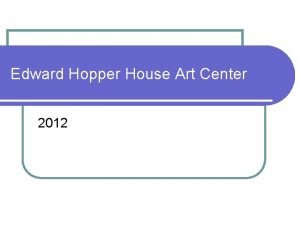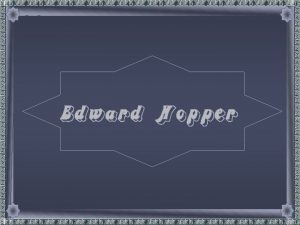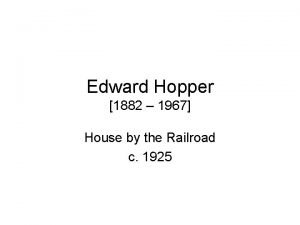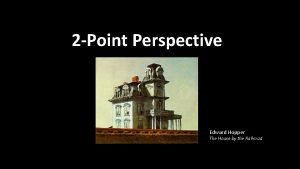20 TH CENTURY AMERICAN ARTIST EDWARD HOPPER Part












- Slides: 12

20 TH CENTURY AMERICAN ARTIST EDWARD HOPPER

Part 1: the artist’s tools. A notepad and a brush Vocabulary: An easel Oil paint Ink bottle and goose feather A roller A palette Colour pencils A canvas A palette knife

PART 1: the artist’s t…… A n………. . and a b……. . : Complete: An ………. paint I……bottle and g……. . F………. A r……… A p………. Colour p…………. . A c………. A p………. . knife

Verbs : To sketch To paint To draw To observe

Verbs: COMPLETE: To ………….

The techniques: Oil painting Pencil drawing Ink on paper Watercolour

Analysing a painting (1): Questions to ask: → what does the painting show? →What technique does the artist use? →How does he represent the scene? What colours does he use? What shapes? What angle is used?

Analysing (2): → the artist’s style : Is it realistic / abstract? modern /classic? Is it naive/ absurd? provocative/ strange? Why is it special? →the atmosphere : Is it pleasant / sad/ surprising/disturbing etc. ? Why?

Analysing (3) : ‘ GAS’ , 1940. A median line In the background At the top The upper part On the left On the right The lower part At the bottom In the middle In the foreground

‘GAS’ (b): Creating a picture: What do you notice about the lines/ shapes he used? What about the colours? Where is the man in the picture? What about the atmosphere? Why did Hopper choose to paint a service station?

ANALYSING(4): observe:

THE COLOURS: Cold colours Warm colours
 Where did edward hopper die
Where did edward hopper die Hopper compartiment c
Hopper compartiment c Edward hopper, morning sun
Edward hopper, morning sun Edward hopper noctámbulos
Edward hopper noctámbulos Hyo-in kim to be modern #2
Hyo-in kim to be modern #2 American recording artist
American recording artist Chapter 4 american life in the seventeenth century
Chapter 4 american life in the seventeenth century American life in the seventeenth century
American life in the seventeenth century Chapter 4 american life in the seventeenth century
Chapter 4 american life in the seventeenth century Chapter 4 american life in the seventeenth century
Chapter 4 american life in the seventeenth century Six sigma project hopper template
Six sigma project hopper template What are the two areas in dark room? *
What are the two areas in dark room? * Khan academy programming
Khan academy programming
